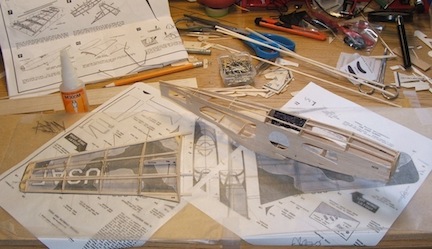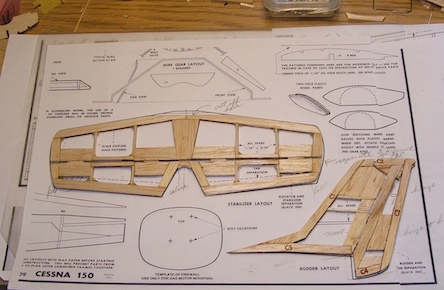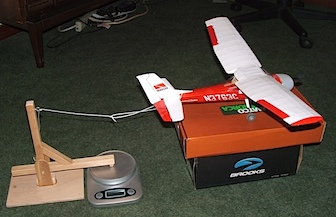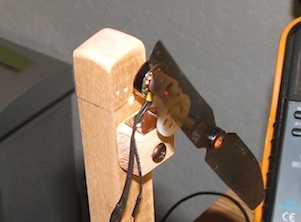Model Airplanes
RC and Rubber Powered, Foam and Balsa
Click  for P-51 Mustang,
for P-51 Mustang,  for Cessna 150,
for Cessna 150,  for Cessna 182,
for Cessna 182,
 for David's Champ,
for David's Champ,
 for Thrust Tests.
for Thrust Tests.
_________________________________________________ |
___________________________________________________________ |
Cessna 150
Cessna 150 (Guillow's kit #309, wingspan is 24 inches) build and conversion to RC
 Here is my completed Cessna 150, already for a test flight — if I get up the courage. |
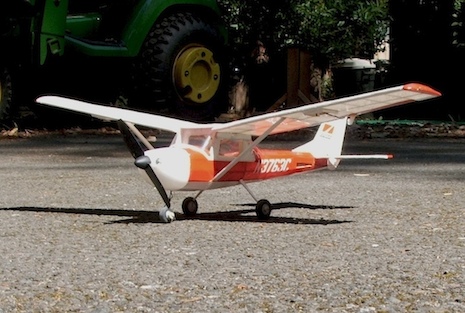 My C-150 would not fly—not enough power. So... it's back to the
|
_________________________________________________ |
___________________________________________________________ |
Thrust Test Results
|
I suspected that I would have trouble when I finished my C-150 and it weighed in at 3.4 oz. That's more |
Airplane/Motor Size/Weight |
Battery |
Propeller Size |
Propeller RPM | Thrust gm/oz/ % of weight |
Cessna 150 /Champ motor/3.4 oz |
1S / 150mAh |
5"x3" x2 |
6460 |
33/1.16 34% |
Cessna 150 /Champ motor/3.4 oz |
1S / 150mAh |
4.3"x3.1" x3 |
6400 |
28/1.0 30% |
Cessna 150 /Champ motor/3.4 oz |
1S / 150mAh |
5.5"x4" x2 |
5460 |
32/1.13 33% |
P-51 Mustang/Rubber /1.25 oz |
Rubber |
5"x4" x2 (100 turns) |
2400 (peak) |
10/0.35 28% |
Cessna-182 /1530Kv Brushless /21 oz |
3S / 1100mAh |
8"x6" x2 |
7980 |
390/13.8 66% |
AD-C5 Brushless Motor |
1S / 150mAh |
5"x3" x2 |
5420 |
27gm |
AP-03 Brushless Motor |
1S / 150mAh |
4.3"x3.1" x2 |
5490 |
27gm |
AP-03 Brushless Motor |
1S / 150mAh |
5"x3"x2 |
6270 |
36gm |
GPS-C03 Brushless Motor w/Gearbox |
1S / 150mAh |
5"x3"x2 |
5140 | 27gm |
AP-05 Brushless Motor w/AR6400LBL Rcv. ESC |
2S / 450mAh |
4.5"x3"x2 |
11,840 |
84gm Bingo!!! |
For Ref: the Champ (below) weighs 1.2oz with a thrust of 1.16oz = 97%
_________________________________________________ |
___________________________________________________________ |
Cessna 182
Cessna 182 (Skyartec Cessna 182 RTF, Wingspan 38-1/2" (978mm))
 Here is my Cessna 182, assembly complete — ready for testing and testing. |
 Out on the driveway. This is where I'll try some taxiing, and maybe even a take-off. |
|
Well, not quite ready to fly (RTF) but it came with all the parts and electronics needed to complete the airplane. The tail section needed assembly and the landing gear and mainplane (wing) installed. Some adjustment on the flight controls was also required and some areas of the blue decals to be re-stuck down to the foam. All the controls are very responsive and the motor has lots of power. The taxiing and steering went well. She wanted to take off but... not just yet. |
_________________________________________________ |
___________________________________________________________ |


